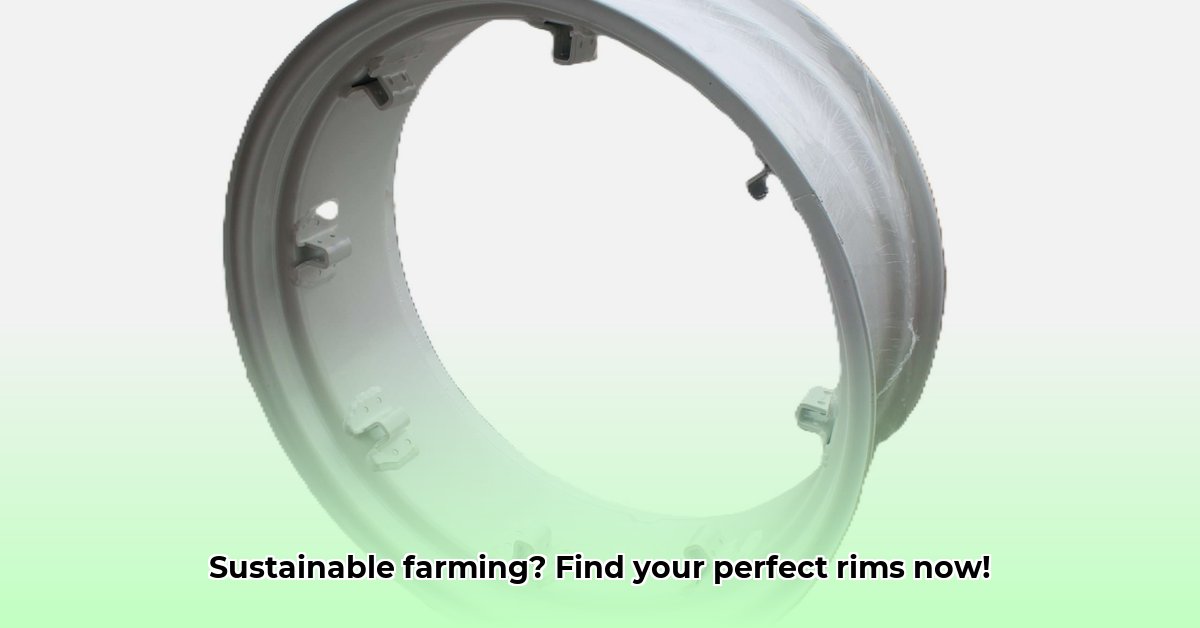
11x28 Tractor Rim: Navigating the Supply Chain for Sustainable Farming
Finding a replacement 11x28 tractor rim can be challenging. This common size, used on many older tractors, is increasingly difficult to source due to supply chain issues and the lack of standardization across manufacturers. This article provides a comprehensive overview of the challenges and offers practical strategies for farmers and other stakeholders. For more information on other tractor rim sizes, check out this helpful resource: Other Tractor Rim Sizes.
The 11x28 Rim Shortage: A Sustainable Farming Challenge
The high demand for 11x28 tractor rims, coupled with limited supply, creates significant hurdles for sustainable farming. Many farmers rely on older, reliable tractors, but replacing vital components like rims can prove difficult and expensive. This scarcity leads to longer wait times, higher prices, and potential equipment downtime. Are there solutions to alleviate this crucial supply chain bottleneck?
The weight of a typical 11x28 rim (approximately 55 lbs) also adds to the challenges of sustainable farming. Transporting heavier rims increases fuel consumption and emissions, counteracting efforts to reduce environmental impact. This underscores the need for a holistic approach to sourcing and managing these parts.
The Part Number Puzzle: Standardizing Rim Identification
Further complicating matters is the lack of standardization in part numbers. Different manufacturers use unique identifiers for essentially the same rim, making it challenging to find the correct replacement. For example, a Ford tractor might list a specific rim as C7NN1050M, while a John Deere uses AL16602. This lack of consistency increases search time and the risk of ordering the wrong part. How can we overcome this obstacle?
Sustainable Practices and Rim Availability: A Critical Interplay
Sustainable farming relies on extending the lifespan of older equipment. However, the difficulty in sourcing replacement parts like 11x28 rims directly threatens these practices. When a rim fails, farmers face a difficult choice: costly repairs, sourcing a used rim (with its own uncertainties), or replacing the entire tractor—a considerable economic and environmental burden.
"The scarcity of 11x28 rims directly impacts the viability of sustainable farming practices," says Dr. Emily Carter, Agricultural Engineering Professor at Purdue University. "Farmers need access to readily available and affordable replacement parts to maintain their older equipment."
Actionable Steps for Farmers and Stakeholders
Here's a practical framework for addressing the 11x28 rim challenge:
Proactive Rim Maintenance: Regular inspections (at least every six months) can detect minor damage, preventing larger, more costly fixes later. This proactive approach increases the lifespan of your existing rims.
Diversified Sourcing: Explore multiple avenues for finding rims: online marketplaces (such as eBay1), used equipment dealers, agricultural parts specialists, and salvage yards. Diversifying your sources significantly reduces the risk of shortages.
Rim Repair and Refurbishment: Instead of immediate replacement, consider repairing or refurbishing damaged rims. This option is often more cost-effective and environmentally responsible than purchasing a new rim. Several specialized workshops offer these services.
Maintain a Spare Rim: Having a spare 11x28 rim on hand can prevent significant downtime if a rim fails unexpectedly. This spares your farm from operational interruptions and potential financial losses.
Collaborative Solutions: A Multi-Stakeholder Approach
Addressing the 11x28 rim shortage requires a collaborative effort from various stakeholders:
| Stakeholder Group | Suggested Actions |
|---|---|
| Parts Suppliers | Improve inventory management, explore resource sharing, offer rim repair and refurbishment services. |
| Tractor Manufacturers | Utilize standardized part numbers across brands, design more durable rims, and support research into alternative materials. |
| Government/Regulatory Bodies | Fund research into durable rim materials and sustainable manufacturing practices. Provide incentives for longer equipment use. |
Minimizing Risks in the 11x28 Rim Supply Chain
A risk assessment highlights key challenges and practical mitigation strategies:
| Risk Factor | Likelihood | Impact | Mitigation Strategy |
|---|---|---|---|
| Supplier Dependency | High | High | Diversify suppliers, build strong relationships with multiple vendors, and maintain backup stock. |
| Rim Obsolescence | Medium | High | Explore rim repair and refurbishment, research alternative rim/tire combinations, and consider custom manufacturing options. |
| Compatibility Issues | Medium | Medium | Thoroughly verify part numbers and cross-reference with multiple sources. |
| High Transportation Costs | High | Medium | Optimize transportation routes, consider lighter materials when possible, and source locally. |
The challenges in sourcing 11x28 tractor rims highlight the need for improved supply chain management and closer collaboration within the agricultural industry. By addressing the issues collectively, we will ensure the continued viability of sustainable farming practices.
Key Takeaways:
- The 11x28 rim shortage impacts the sustainability of farming operations.
- Proactive maintenance, diversified sourcing, and rim repair/refurbishment are crucial.
- Collaboration between farmers, suppliers, manufacturers, and government agencies is essential.
- A long-term strategy, including consideration of alternative materials and rim designs, is needed to ensure future availability.
https://m.ebay.com/sch/i.html?_nkw=11x28+tractor+rim&_sop=12 ↩